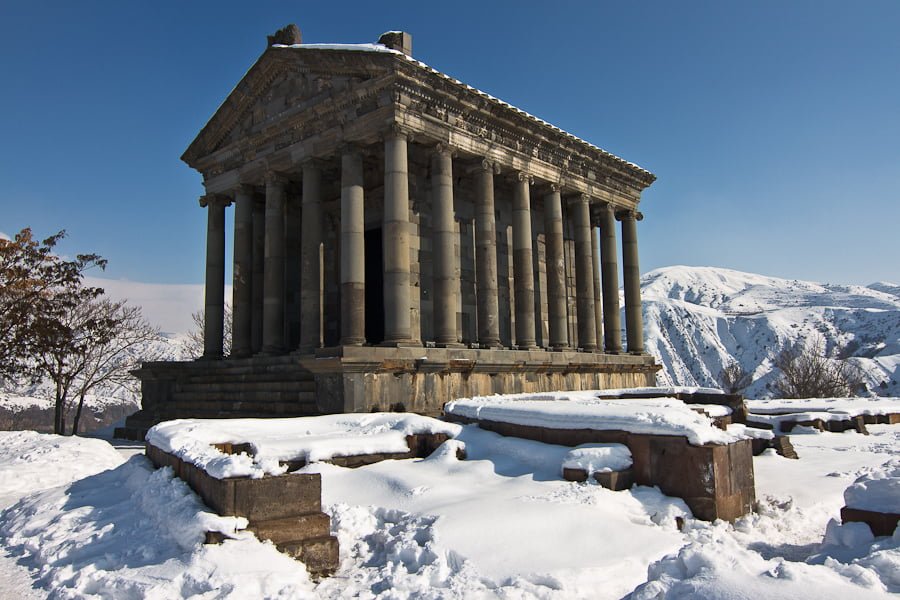Temple of Garni: The only pagan temple in Armenia
Armenia is an ancient country, and during its existence, people went through different epochs, and before accepting Christianity, the ancient Armenian pagan religion dominated in the country. And today, many traces of the history of our country have reached us, and one of them is the pagan temple of Garni.

Temple of Garni History
According to the research of some historians, the temple was created by the Armenian king Trdat I, who ruled in the second half of the 1st century. According to the cuneiform found in the village of Garni, the temple was later conquered by King Argishti in the first half of the 8th century, after which he built the fortress of Erebuni, which began to develop and later became the capital of Armenia, modern Yerevan.
Beginning from the 3rd BC up to the 4th century, the Garni temple was the summer residence of the Armenian kings, because it was liked by both the kings and the population for its inaccessibility.
The fortune of the temple
The temple was created in honour of the ancient Armenian god Mihr – the god of the Sun, light and purity. In 301, Armenia adopted Christianity as its state religion, and everything that was somehow connected with paganism was destroyed, and the Garni temple is the only surviving pagan temple in Armenia today.
Pagan temple in Armenia: why did Garni survive?
The army of Trdat III, the new ruler, in order to strengthen and protect the new religion, burnt all the pagan temples, statues, relics. However, thanks to the graciousness of the king’s sister, Khosrovandukht, who asked her brother not to destroy this temple, so only the images and statues of the pagan gods were destroyed.
However, the temple of Garni was not out of danger. The destructive campaigns of the Roman legions against Armenia in the 1st century caused devastating damage to the temple, and the 1679 earthquake near the village of Garni scattered columns and stones of the temple in all directions, into the Azat River and into the gorge around the triangular cape. The temple was rebuilt in Soviet times by the efforts of the local population.

Temple of Garni
Garni today
The fortress is loved by both local and guests, because the temple is not like other religious monuments in Armenia, and when you are closer, it seems that you are in little Greece with an Armenian spirit.
Judging by the remains, the temple was brightly decorated and painted both from the inside and the outside. Close to the temple, a Roman-style bath was found, in which kings and their honoured guests were likely to bathe. Mosaic floor, which testifies to the art and craftsmanship of artistically talented Armenians, was found in one of these baths.
Visiting Garni, you will receive an unforgettable pleasure and an all-consuming feeling of delight because both the temple and its surrounding majestic nature are beautiful: the mountains, the gorge, river Azat and, of course, the natural monument of incredible beauty – the Symphony of Stones.
